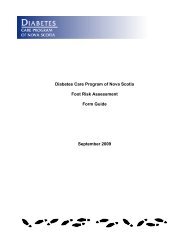CDE Appendix 1 Literature Review - Central East Local Health ...
CDE Appendix 1 Literature Review - Central East Local Health ...
CDE Appendix 1 Literature Review - Central East Local Health ...
You also want an ePaper? Increase the reach of your titles
YUMPU automatically turns print PDFs into web optimized ePapers that Google loves.
The Culture, Diversity and Equity Project: <strong>Literature</strong> <strong>Review</strong><br />
Use of Evidence<br />
<strong>Health</strong> Equity policies can be distinguished by the extent to which they use and incorporate evidence into their<br />
policies and policy-making processes. Global momentum has grown considerably in recent years for evidencedbased<br />
policymaking and evaluation (see Exworthy et al., 2006; Whitley, 2007; Davies, Nutley, and Smith, 2000;<br />
Walshe and Rundall, 2001). Among national governments, the UK government has come closest to living by its<br />
motto of ‘what counts is what works’ (Exworthy and Berney, 2000).<br />
Exworthy et al. (2006) emphasize the importance of prioritizing interventions and policies on the basis of evidence<br />
of their potential effectiveness in reducing health inequalities. Mackenbach et al., (2002b) stress the importance of<br />
two types of evidence more specifically:<br />
[1] evidence that the determinant addressed by the intervention or policy plays a key role in the causation<br />
of socioeconomic inequalities in health; [and]<br />
[2] evidence that the proposed intervention or policy can be expected to effectively reduce exposure to<br />
that determinant in the lower socio-economic groups (or to reduce socioeconomic inequalities in<br />
exposure to that determinant) (p.32).<br />
This is where choice of framework is important, as discussed earlier, since it can more or less provide an evidencebased<br />
theoretical model and framework for intervention.<br />
Both of the above two types of ‘evidence’ discussed by Mackenbach et al. (2002b) can be difficult to definitively<br />
obtain (see Section 2.4). Mackenbach et al. (2002b) and Gardner (2008a) recommend a certain degree of measured<br />
pragmatism in advancing health equity policy and practice in areas where evidence may not be readily established or<br />
forthcoming. 17<br />
Evidence alone, moreover, as earlier discussed, cannot singlehandedly determine health equity policies since the<br />
goals and objectives of such policies also presuppose and require staking out particular normative/ethical positions<br />
(which may be more or less compelling).<br />
The WHO (2008) Closing the Gap report suggests the need to expand conventional definitions and conceptions of<br />
what constitutes ‘evidence’ beyond experimental designs and randomized controlled trials etc. (for instance by<br />
including qualitative measures, community accounts etc.).<br />
Judge and Mackenzie (2002) also elaborate the important potential role of theory-based evaluations when dealing<br />
with broad determinants of health that do not lend themselves to experimental manipulation. (For more on some of<br />
the difficulties in furnishing ‘evidence’ for policies and their impact also see Exworthy et al., 2006 and Judge &<br />
Mackenzie, 2002).<br />
17 Mackenbach et al. argues in this respect:<br />
it may take decades to build up a reasonably extensive evidence base. It is therefore better to be pragmatic and to be prepared to decide for the<br />
implementation of policies and interventions in the absence of full documentation of their effectiveness. Sometimes, effectiveness can reasonably<br />
be expected on the basis of experience in another setting, or evidence of effects on intermediate outcomes. In such cases it is all the more<br />
important that while the policies or interventions are being implemented, evaluations are carried out so that their effectiveness can be determined<br />
at a later stage, and changes made if effectiveness remains below expectations. In reality, all this implies that it will usually be difficult to<br />
prioritize policies and interventions on the basis of scientific evidence only. Other considerations, for example, on the (political) feasibility of<br />
certain strategic options, are likely to have a profound influence on priority setting in this area (2002b, p.33).<br />
59

















